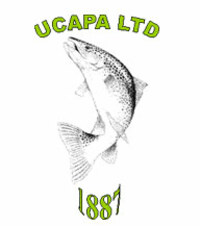Many thanks to George and David for facilitating this camera's location and to United Clyde Angling Protective Association Ltd for their help in arranging its installation to monitor river levels at this location. The bridge at this location has a rich history, dating back to 1793. Prior to its construction, there existed a ford and a ferry to facilitate crossing. The River Clyde takes shape through the merging of two streams, namely the Daer Water and the Potrail Water. The Southern Upland Way intersects both streams before their confluence at Watermeetings, forming the main course of the River Clyde. Interestingly, the Clyde is a mere 6 miles away from Tweed's Well, the source of the River Tweed, and 8 miles from the Devil's Beef Tub, the origin of the River Annan. From this point, the Clyde meanders northeast before curving westward, with its flood plain serving as the route for numerous significant roads in the region, until it reaches the town of Lanark.Along the banks of the Clyde, industrialists David Dale and Robert Owen established their mills and the exemplary settlement of New Lanark. These mills harnessed the power of the Falls of Clyde, with Cora Linn being the most striking among them. Even today, a hydroelectric power station continues to generate electricity in this area, although the mills themselves have been transformed into a museum and designated as a World Heritage Site. settlement along the Clyde can be traced back to the Paleolithic era, with artifacts dating back to 12,000 BC discovered near the rural town of Biggar in close proximity to the river. Notably, Biggar is home to an archaeological site where some of Britain's oldest artifacts have been unearthed. Prehistoric canoes, once used for transportation and trade, have been found in the river. Numerous Mesolithic sites are scattered along the Clyde, particularly in the Upper Clyde Valley. During the Neolithic and Bronze Ages, permanent settlements and structures, including a potential temple dedicated to moon gods in Govan, were constructed in the region. Celtic culture, art, and language gradually spread from the south during this period, with prehistoric artifacts suggesting their dominant influence in the area by approximately 1000 BCE.Before the arrival of the Roman legions in southern Scotland, the River Clyde and its surrounding territory were inhabited by the Brythonic-speaking Damnonii tribe. It is believed that a Damnonii settlement named Cathures existed in the area, serving as a precursor to modern-day Glasgow. Available historical and archaeological evidence from the Roman period does not indicate any battles in the region. Therefore, it is assumed that the Roman legions and the Damnonii tribespeople maintained friendly relations, engaging in trade and the exchange of military information. However, the Romans did construct several forts, such as Castledykes, Bothwellhaugh, Old Kilpatrick, and Bishopton, along the banks of the Clyde. Additionally, they established a network of roads, ranging from smaller routes to larger trade routes capable of accommodating entire legions. The Antonine Wall, situated a short distance from the river, was later built by the Romans as a defensive barrier against potential Pictish invasions.
Despite the favorable strategic location and flat terrain of Glasgow and the surrounding Clyde basin, no Roman civilian settlement was established in the area. Instead, the region primarily served as a frontier zone between the Roman province of Britannia Inferior and the indigenous Caledonians, who were hostile towards the Romans.






